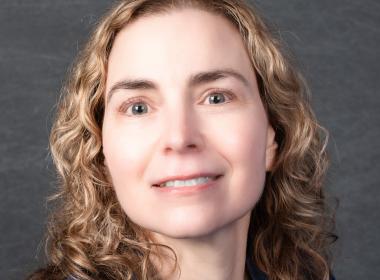Rhabdomyolysis Clinical Pathway Rhabdomyolysis is a syndrome characterized by the breakdown of skeletal muscle leading to the release of intracellular muscle constituents. The most common etiologies in children are viral illnesses, exercise, and trauma. Muscle pain and muscle weakness are the most common
Fetal & Neonatal Center of Regenerative Medicine The Fetal & Neonatal Center of Regenerative Medicine is a pioneering consortium at the forefront of developing transformative therapies for fetal, neonatal, and pediatric patients. Focused on addressing congenital anomalies and complex health challenges, the Center utilizes
Sickle Cell Patient with Fever Clinical Pathway Patients with sickle cell disease (SCD) are at increased risk of severe bacterial infections, in large part due to reduced or absent splenic function. Repeated episodes of sickling and infarction lead to ‘autosplenectomy,’ often by age three years. Functionally asplenic patients
DIAMOND Award The Division of Clinical Services includes the following services: Audiology, Cardiopulmonary Lab, Care Coordination, Child Life, Clinical Nutrition, Neurodiagnostic Lab, Occupational Therapy, Pharmacy, Physical Therapy, Radiology, Respiratory, Sleep Lab, Social Work, Speech &
Sickle Cell: Management of Acute Pain Crisis Clinical Pathway Sickle Cell Disease (SCD) is the most common genetic disease in the United States. It is caused by a mutation in the hemoglobin beta chain in which glutamic acid is substituted with valine. The Centers for Disease Control and Prevention (2019) estimates that over 100,000
Skin and Soft Tissue Infection Clinical Pathway Over the years, the increase in resistance to typical antibiotics has changed the approach to the management of skin and soft tissue infections (SSTIs) in children. In 2014, the Infectious Disease Society of America (IDSA) updated their SSTIs guidelines. Based on these changes
Article
Portion Sizes for Kids: How Much Food Is Healthy for My Child’s Age? By Jennifer Zarrilli, MS, RD: Some days, figuring out what to feed your child is hard enough. Figuring out how much can seem downright impossible. The recommended portions for a child depend on their age and even gender – and unfortunately, the serving size listed on grocery store labels doesn’t have much to Somatic Symptom and Related Disorders (SSRD) Clinical Pathway Somatic Symptom and Related Disorders (SSRD) is a clinical presentation where symptoms or impairment cannot be fully explained by an identifiable disease process given the current medical evidence. This pathway seeks to evaluate and ultimately explain to patients and their

Status Epilepticus Clinical Pathway Status epilepticus is a relatively common medical presentation, with 18-41 per 100,000 children presenting to emergency rooms each year. The American Epilepsy Society made recommendations in 2016 for treatment of prolonged seizures, which includes level A evidence of
Suspected Neurosurgical Shunt Infection Clinical Pathway Ventricular-peritoneal shunt placement is a common neurosurgical procedure. Ventricular-peritoneal shunt infection is a known risk in children with this hardware. Early recognition and treatment is essential to prevent further morbidity, and it also leads to decreased medical
Suspected Neurosurgical Shunt Malfunction Clinical Pathway Ventriculoperitoneal (VP) shunt insertion remains the mainstay of treatment for hydrocephalus despite a high rate of complications. In the United States alone, more than 30,000 procedures to relieve hydrocephalus are performed every year. The 1-year failure rate for VP shunts had